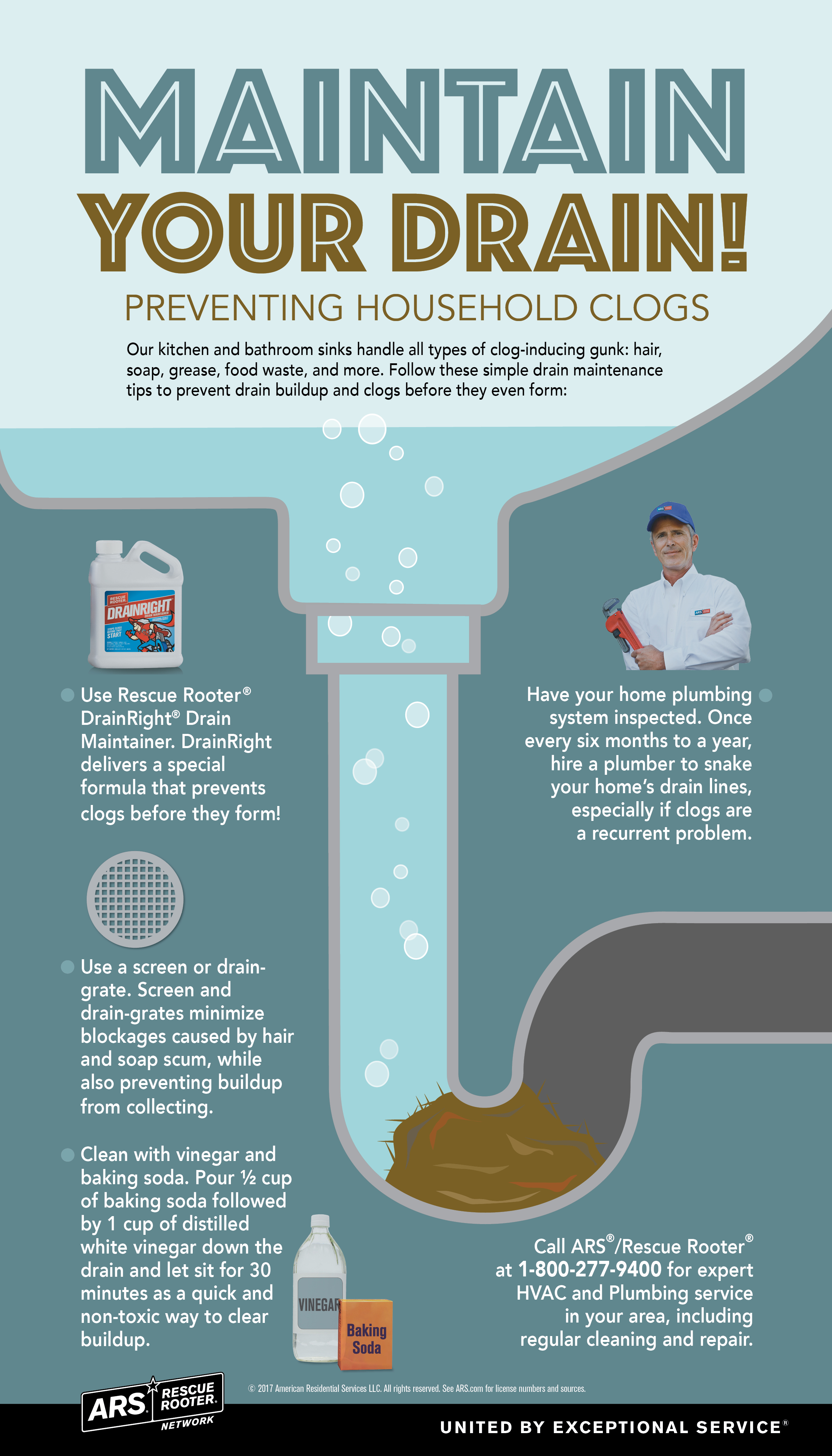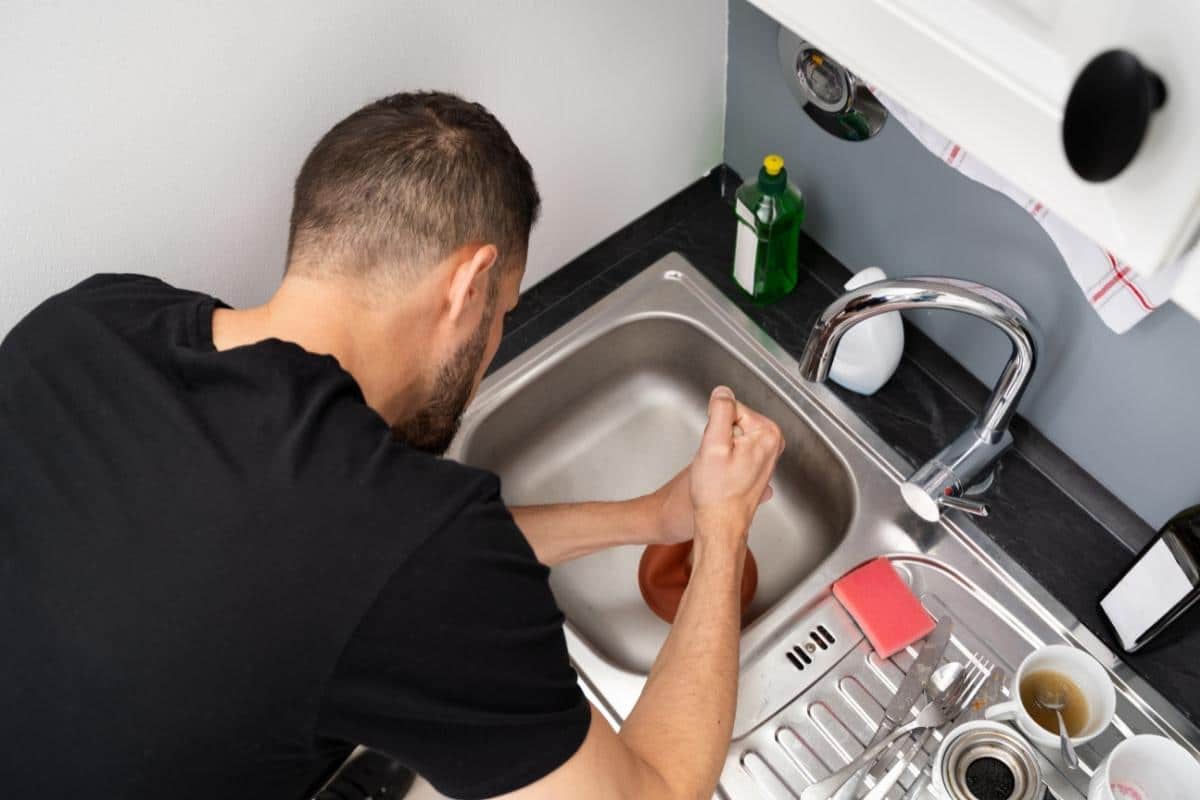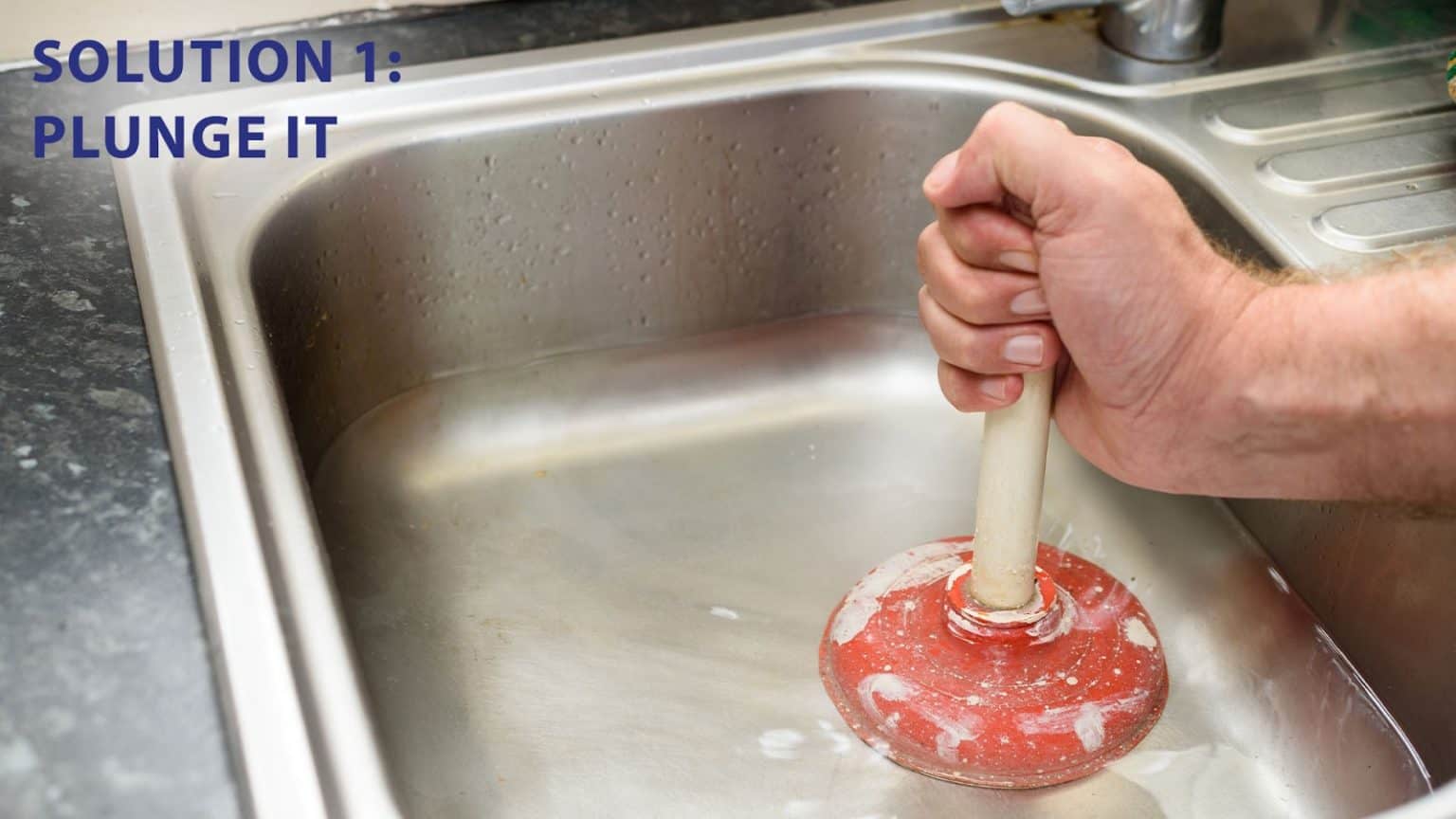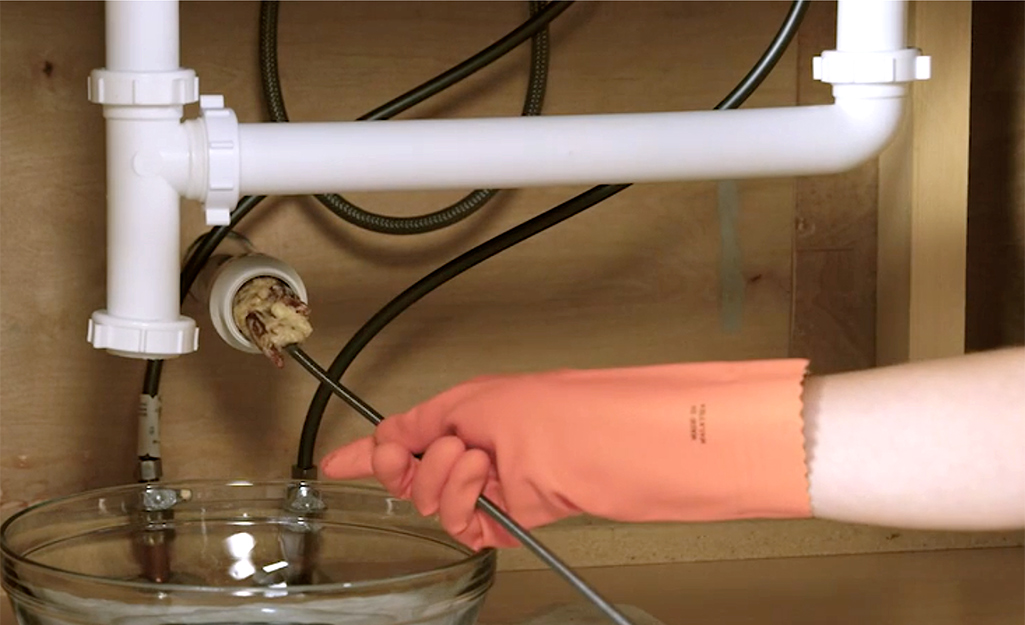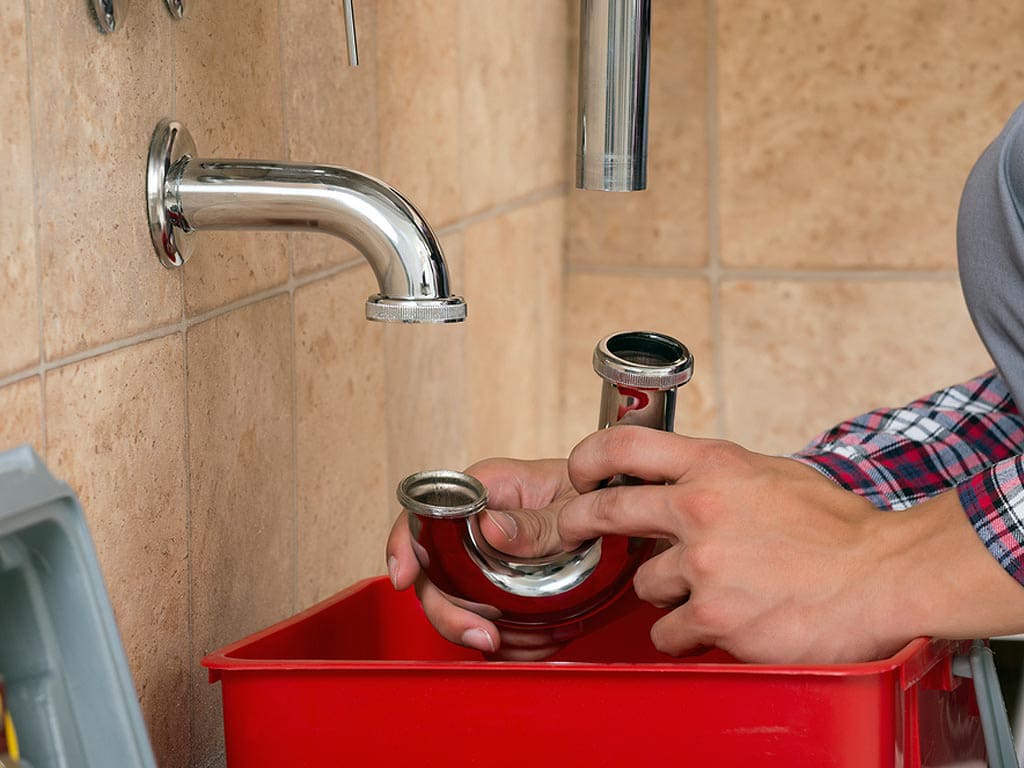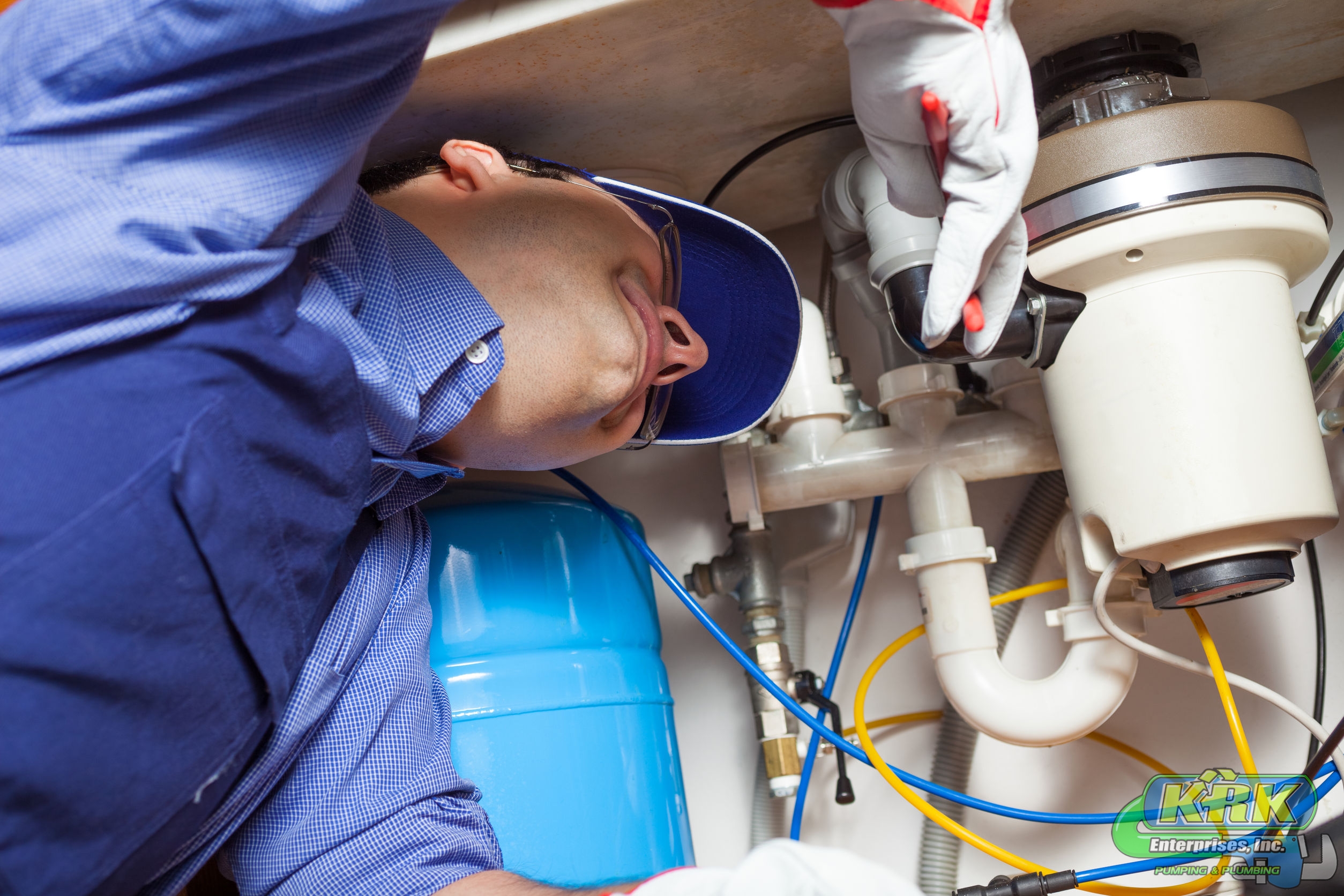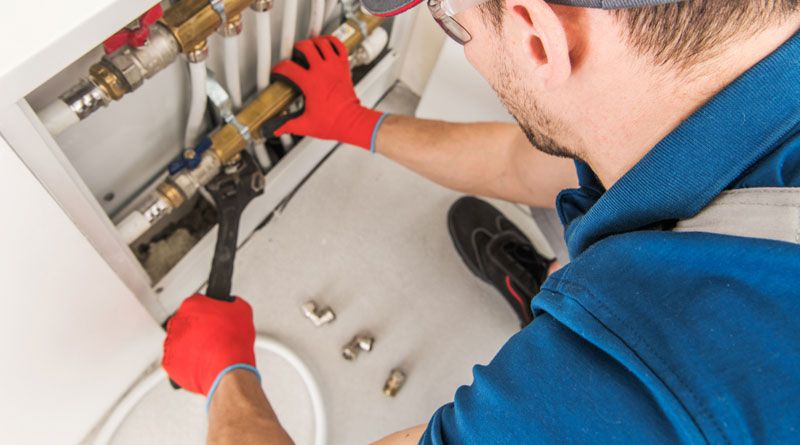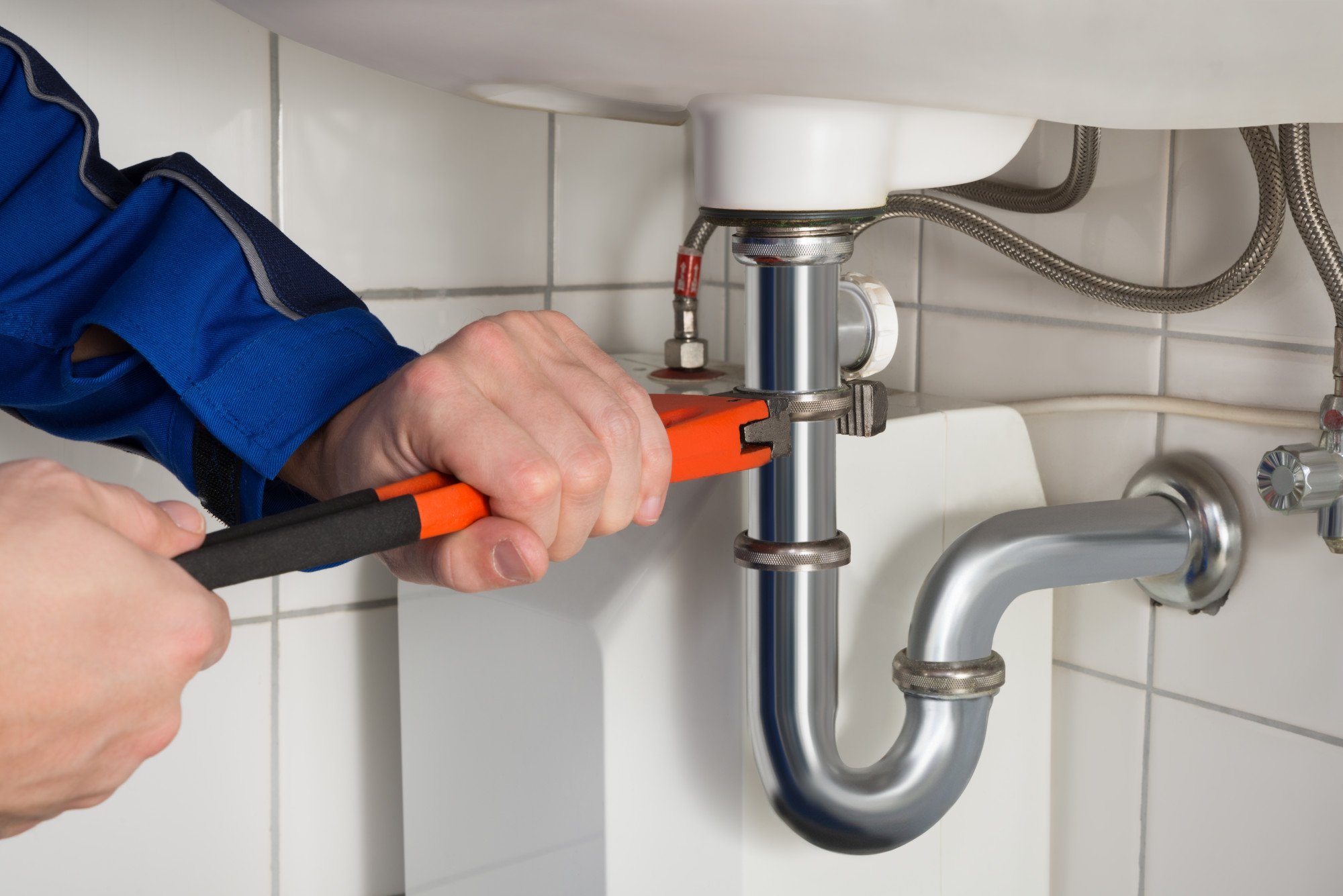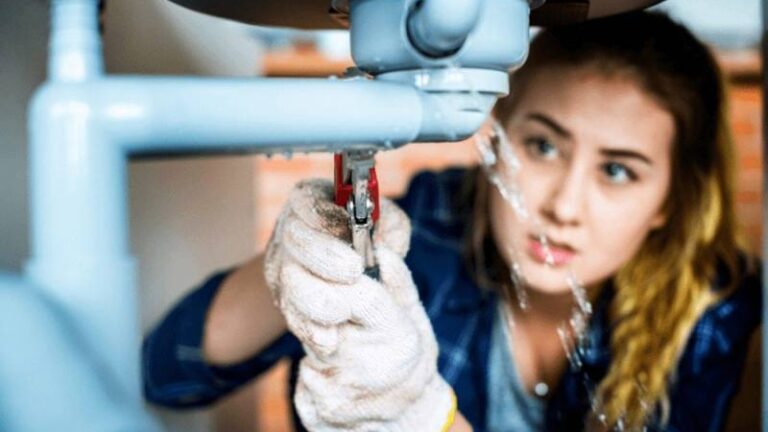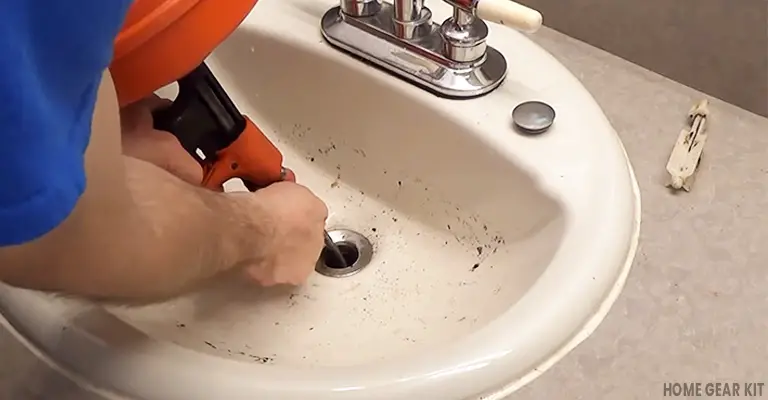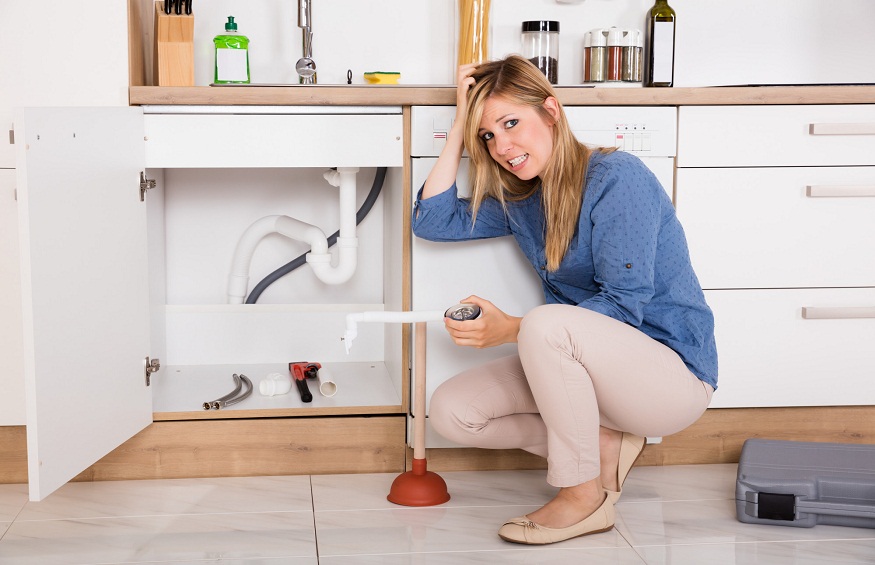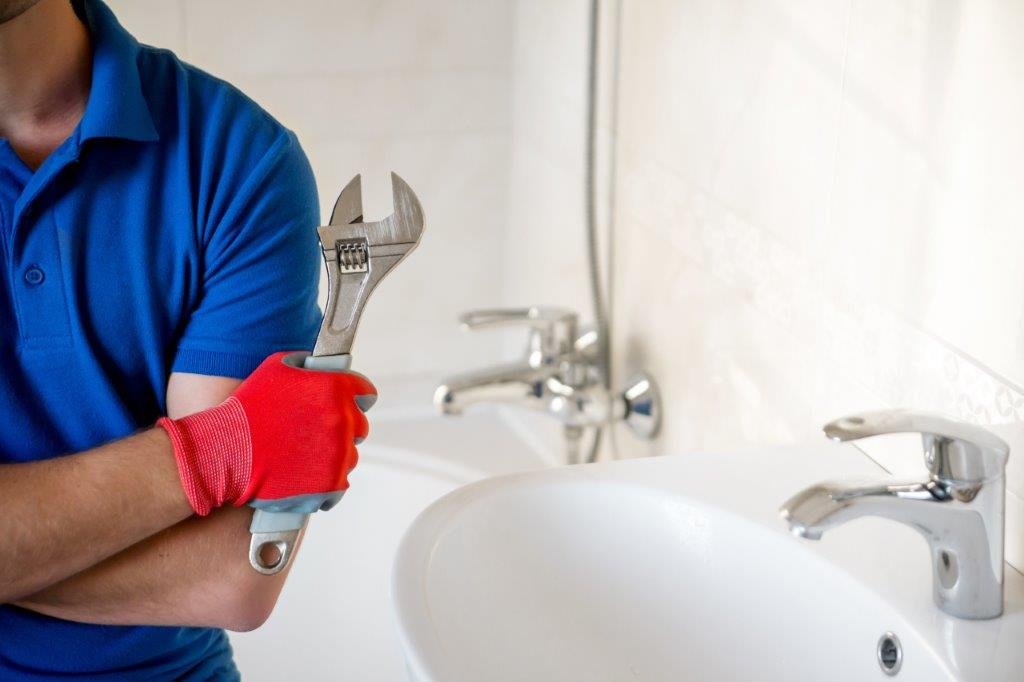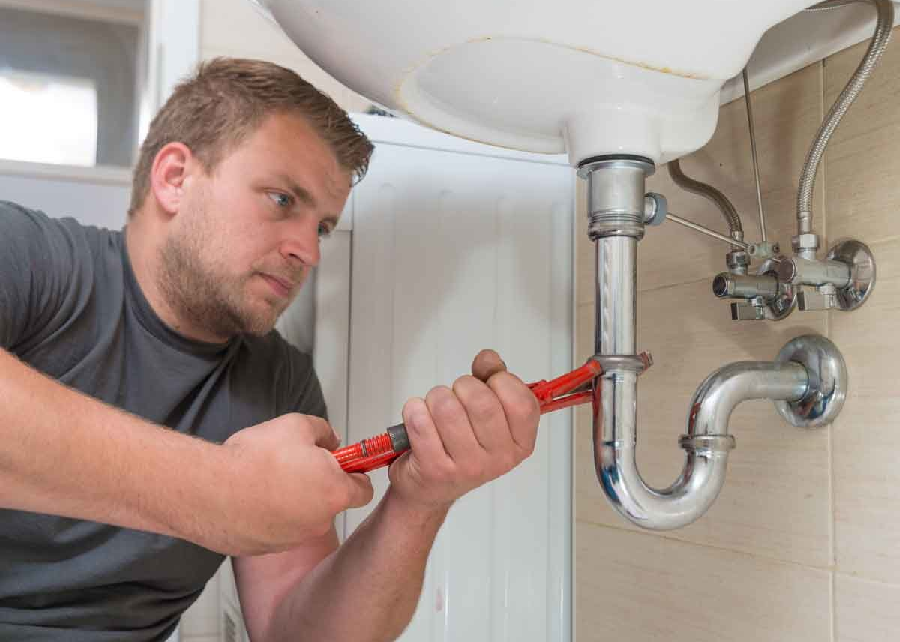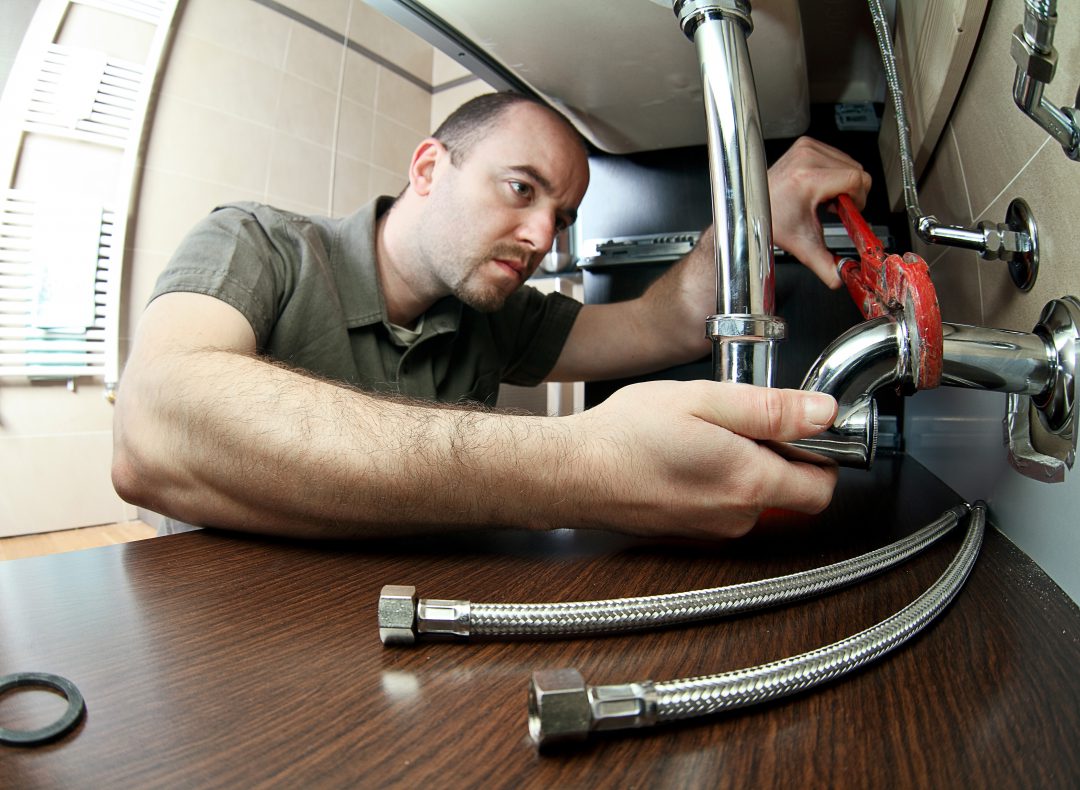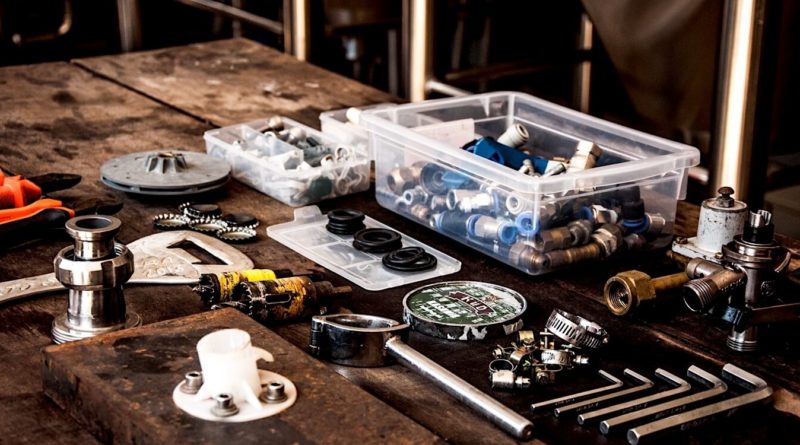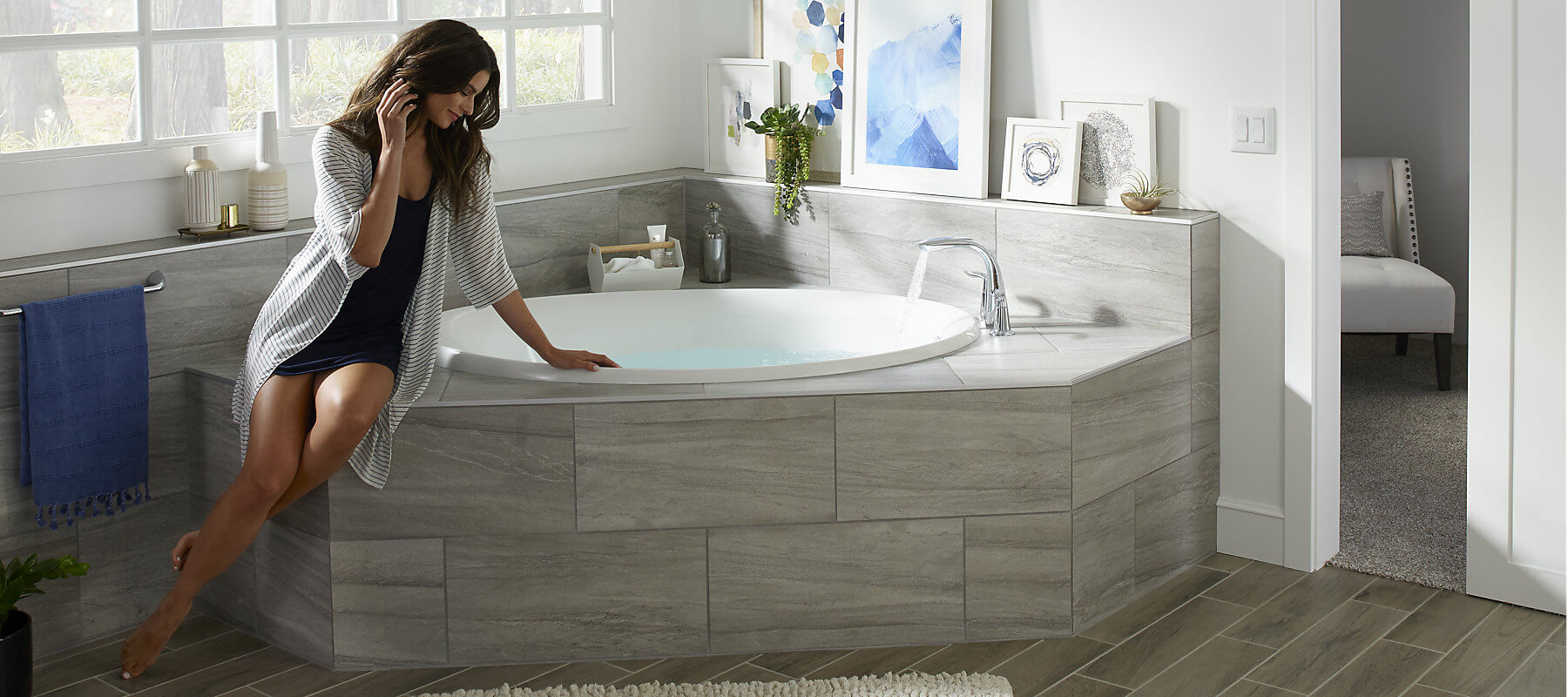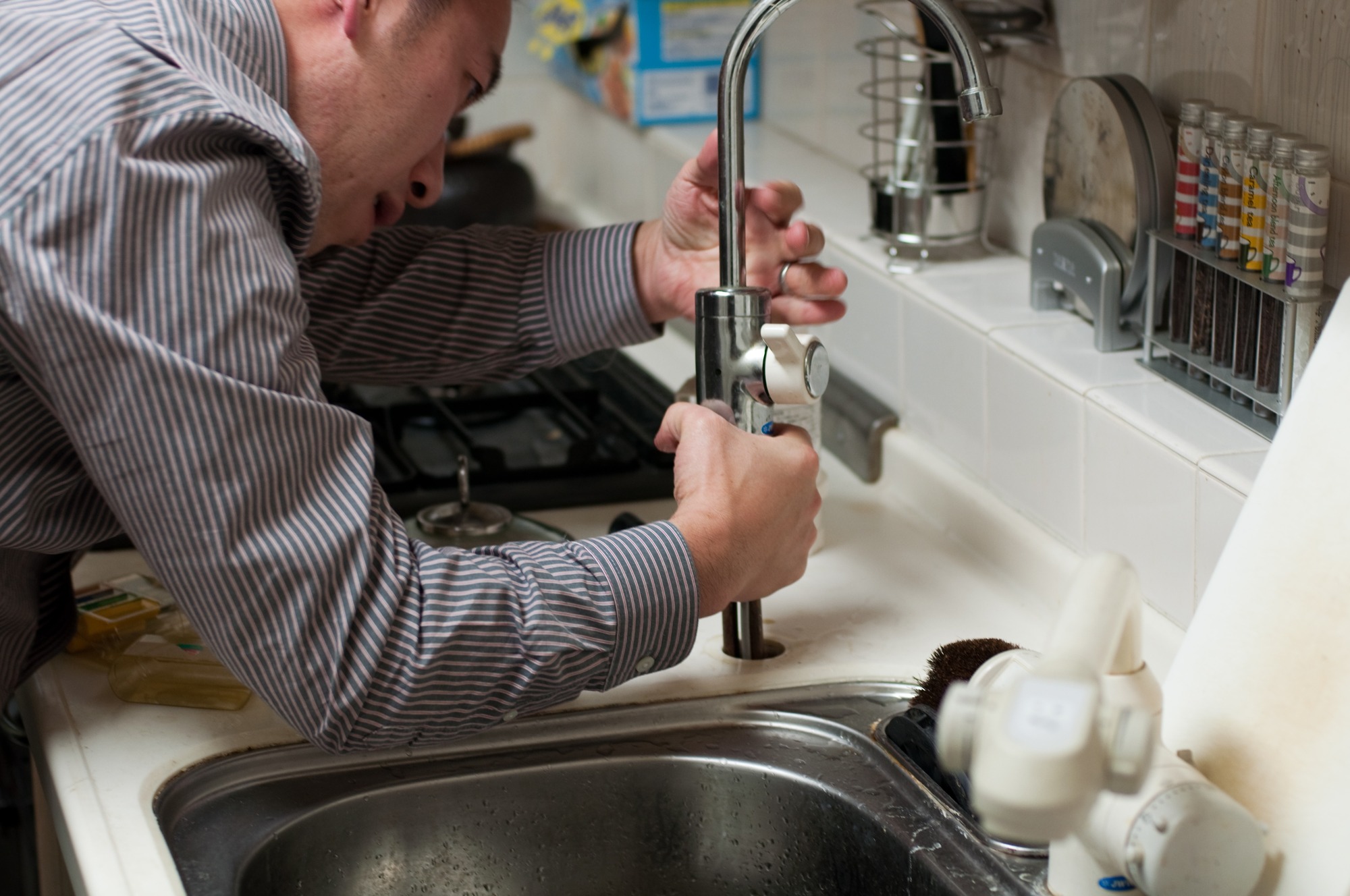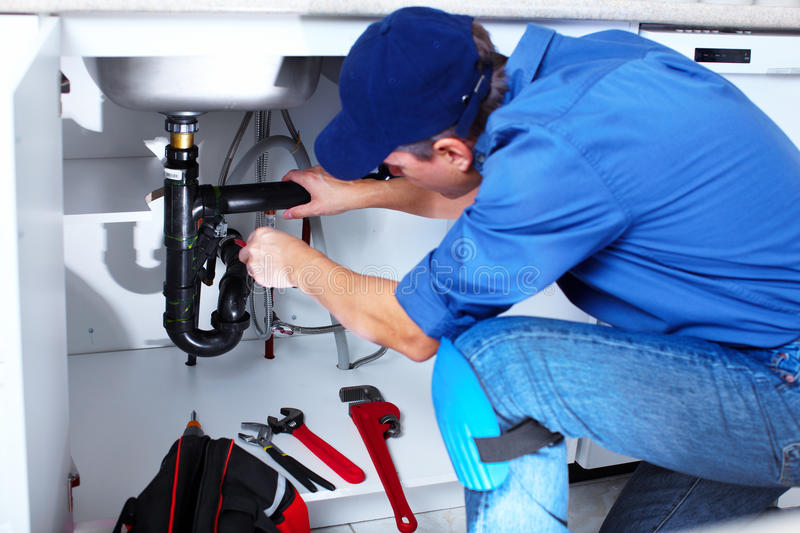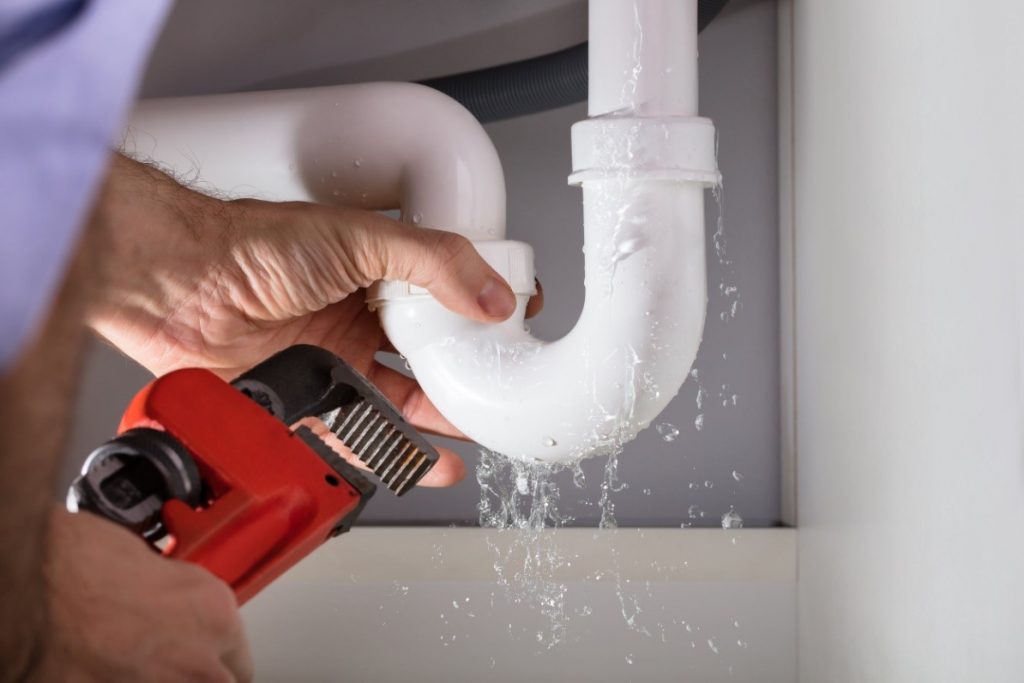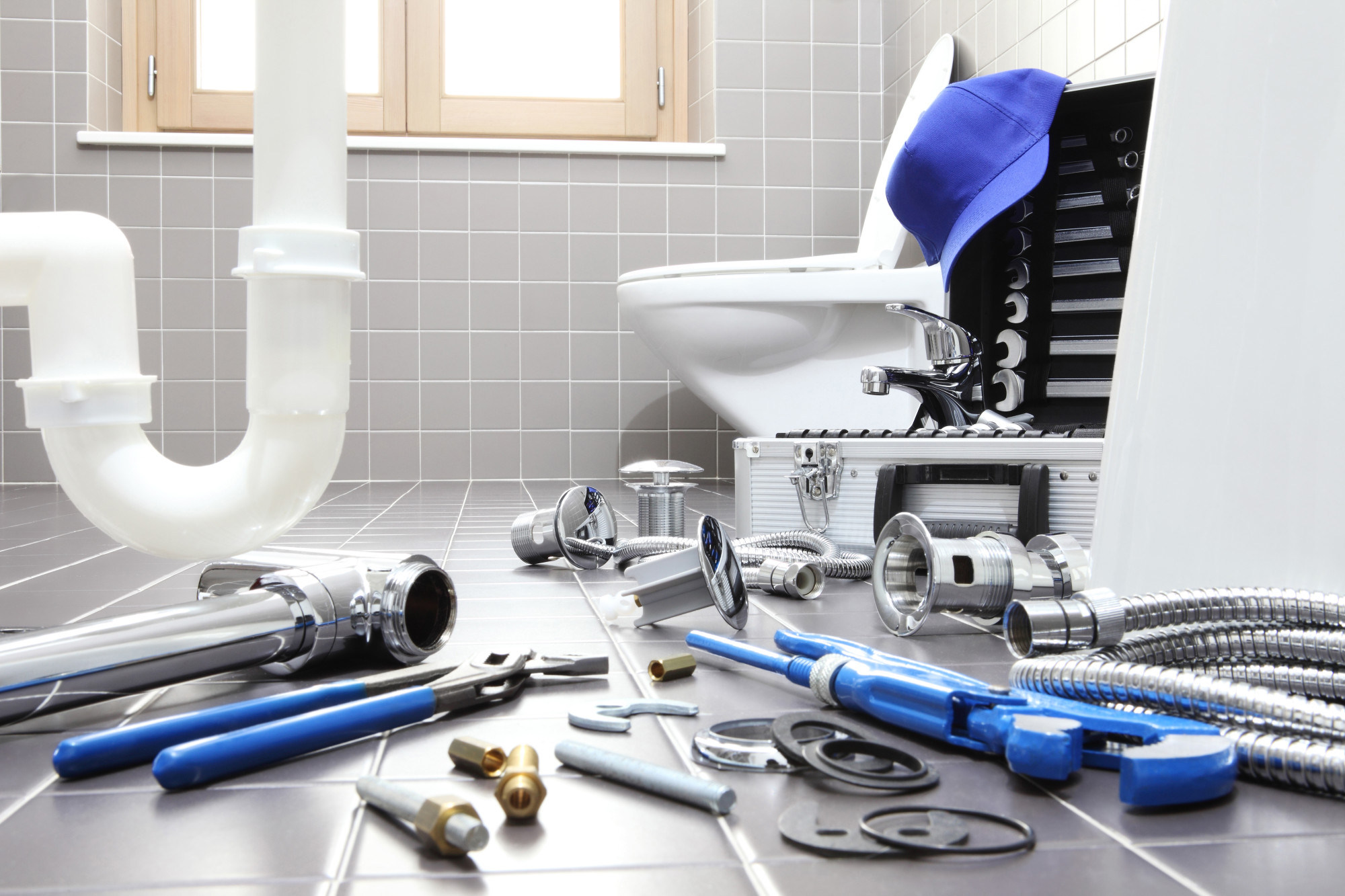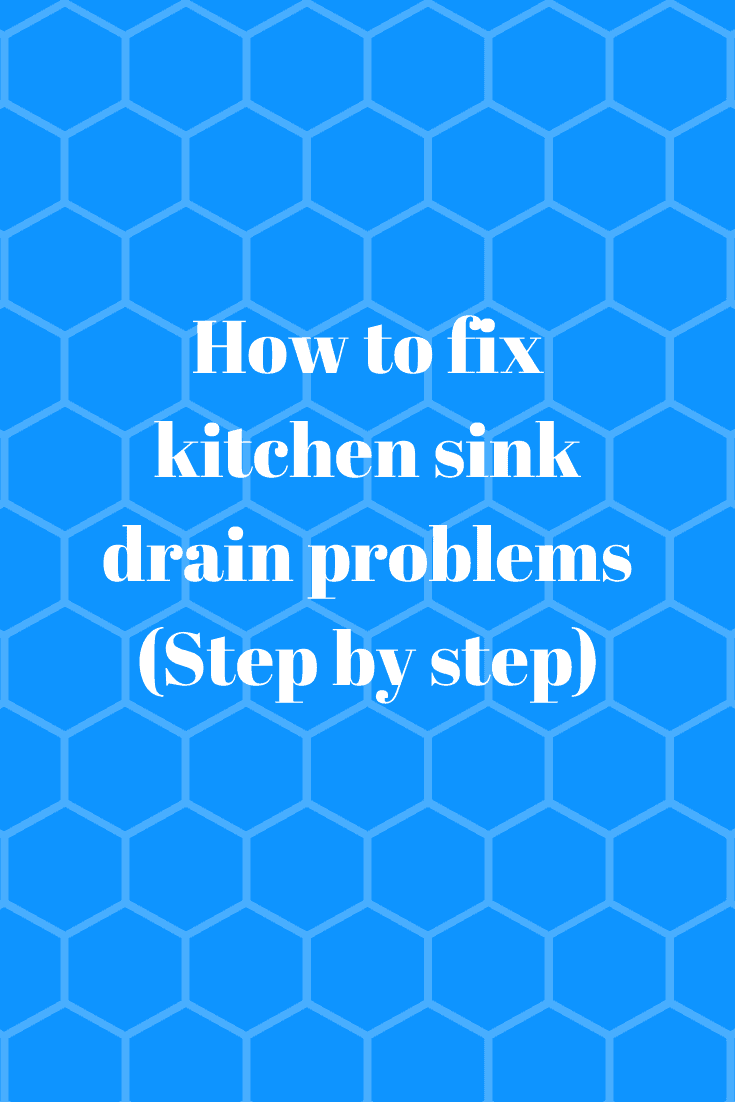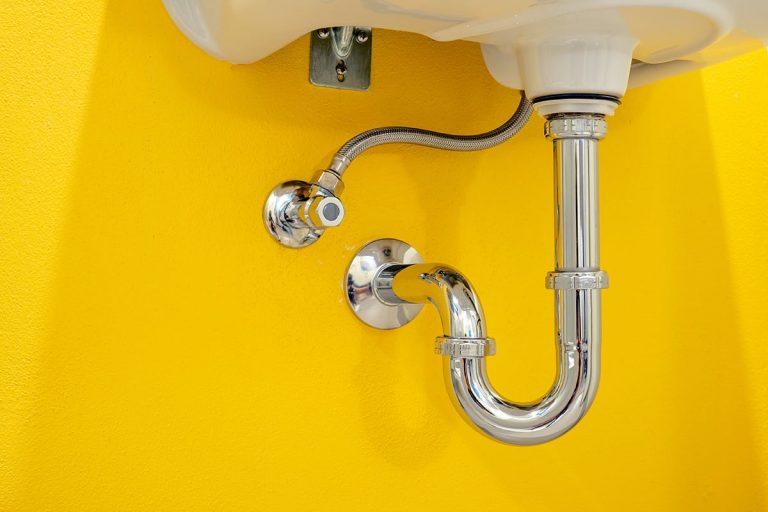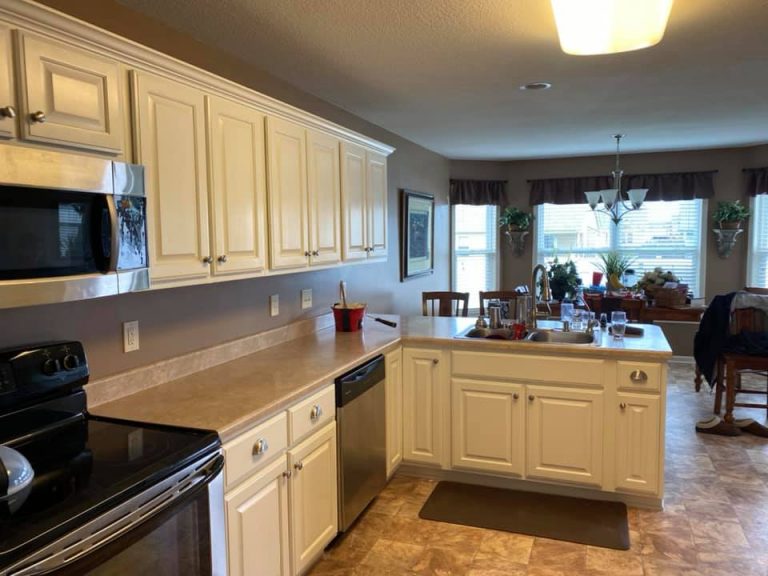A clogged bathroom sink drain can be a major inconvenience. Not only does it prevent you from using the sink, but it can also lead to unpleasant odors and even water damage if left untreated. The good news is that you can easily fix a clogged sink drain on your own with a few simple tools and techniques. The first step in unclogging a bathroom sink drain is to remove any visible debris from the surface. This could include hair, soap scum, or other gunk that has built up over time. Use a pair of gloves and a small tool, such as a toothbrush or tweezers, to remove the debris. Next, try using a plunger to loosen the clog. Place the plunger over the drain and push down firmly, then pull up quickly. This suctioning action can help dislodge the clog and allow water to flow freely again. If the plunger doesn't work, you may need to try a different method. One effective way to unclog a bathroom sink drain is to use a mixture of baking soda and vinegar. Start by pouring half a cup of baking soda down the drain, followed by half a cup of vinegar. Let the mixture sit for a few minutes before pouring a pot of hot water down the drain. The chemical reaction between the baking soda and vinegar can help break up the clog. If the clog is still stubborn, you may need to use a plumbing snake. This long, flexible tool can reach deep into the drain and break up any blockages. Insert the snake into the drain and turn it clockwise while pushing it forward. Once you feel the snake hit the clog, turn it counterclockwise to break it up. Repeat this process until the clog is cleared. In some cases, a clogged bathroom sink drain may require the use of a chemical drain cleaner. However, these can be harsh on your pipes and should be used as a last resort. If you do use a drain cleaner, be sure to follow the instructions carefully and wear gloves and eye protection. To prevent future clogs, be mindful of what you put down the drain. Avoid pouring grease, oil, or food scraps down the sink, and use a drain strainer to catch any hair or debris. Regularly cleaning your sink drain with a mixture of baking soda and vinegar can also help prevent clogs. Dealing with a clogged bathroom sink drain can be frustrating, but with these tips, you can easily fix the problem and get your sink back to working order. If these methods do not work, it may be a sign of a more serious plumbing issue and you should call a professional plumber for assistance. Bathroom Sink Drain Clogged | How to Fix a Clogged Sink Drain | Extreme Plumbing Problems
Dealing with a clogged bathroom sink drain can be a hassle, but before you call a plumber, there are a few DIY methods you can try to unclog the drain yourself. These tips can save you time and money, and are simple enough for anyone to try. The first step in unclogging a bathroom sink drain is to remove any visible debris from the surface. This could include hair, soap scum, or other gunk that has built up over time. Use a pair of gloves and a small tool, such as a toothbrush or tweezers, to remove the debris. Next, try using a plunger to loosen the clog. Place the plunger over the drain and push down firmly, then pull up quickly. This suctioning action can help dislodge the clog and allow water to flow freely again. If the plunger doesn't work, you may need to try a different method. One effective way to unclog a bathroom sink drain is to use a mixture of baking soda and vinegar. Start by pouring half a cup of baking soda down the drain, followed by half a cup of vinegar. Let the mixture sit for a few minutes before pouring a pot of hot water down the drain. The chemical reaction between the baking soda and vinegar can help break up the clog. If the clog is still stubborn, you may need to use a plumbing snake. This long, flexible tool can reach deep into the drain and break up any blockages. Insert the snake into the drain and turn it clockwise while pushing it forward. Once you feel the snake hit the clog, turn it counterclockwise to break it up. Repeat this process until the clog is cleared. In some cases, a clogged bathroom sink drain may require the use of a chemical drain cleaner. However, these can be harsh on your pipes and should be used as a last resort. If you do use a drain cleaner, be sure to follow the instructions carefully and wear gloves and eye protection. To prevent future clogs, be mindful of what you put down the drain. Avoid pouring grease, oil, or food scraps down the sink, and use a drain strainer to catch any hair or debris. Regularly cleaning your sink drain with a mixture of baking soda and vinegar can also help prevent clogs. By following these DIY plumbing tips, you can easily unclog your bathroom sink drain and avoid the hassle and expense of calling a professional plumber. Remember to always use caution and follow the instructions carefully when using any tools or chemicals. How to Unclog a Bathroom Sink Drain | DIY Plumbing Tips | Extreme Plumbing Problems
Dealing with a bathroom sink drain that isn't working properly can be a major inconvenience. There are a few common problems that can occur with sink drains, but luckily, many of these issues can be easily fixed with some basic troubleshooting. Here are some tips for identifying and solving common bathroom sink drain problems. The first, and most obvious, problem is a clogged drain. This can happen due to a buildup of hair, soap scum, or other debris. Use a plunger, a mixture of baking soda and vinegar, or a plumbing snake to clear the clog. If these methods do not work, you may need to use a chemical drain cleaner, but use caution and follow the instructions carefully. Another common issue is a leaky sink drain. This can be caused by worn out gaskets or seals, loose connections, or a cracked pipe. To fix this problem, you may need to replace the gaskets or seals or tighten the connections. If the pipe is cracked, you may need to call a professional plumber for assistance. A slow draining sink can also be a nuisance. This can be caused by a partially clogged drain, so try using a plunger or a mixture of baking soda and vinegar to clear the clog. If the problem persists, it could be a sign of a more serious issue, such as a damaged pipe, and you may need to call a plumber for help. Lastly, a sink drain that emits foul odors can be unpleasant. This could be due to a buildup of bacteria and mold in the drain. To get rid of the smell, try pouring a mixture of baking soda and vinegar down the drain and letting it sit for a few minutes before flushing with hot water. Regularly cleaning your sink drain with this mixture can also help prevent odors from occurring. By troubleshooting these common bathroom sink drain problems, you can easily fix the issue and get your drain working properly again. If these tips do not solve the problem, it may be a sign of a more serious plumbing issue and you should call a professional for assistance. Common Bathroom Sink Drain Problems | Troubleshooting Tips | Extreme Plumbing Problems
If your bathroom sink drain is damaged or not working properly, you may need to replace it. This may seem like a daunting task, but with the right tools and a little know-how, you can easily replace the drain yourself. Here is a step-by-step guide on how to replace a bathroom sink drain. The first step is to gather your tools and materials. You will need a new sink drain, a pipe wrench, plumber's putty, and a screwdriver. It's also helpful to have a bucket or towel to catch any water that may spill out during the process. Next, turn off the water supply to the sink. This can usually be done by turning the shut-off valves under the sink to the off position. If your sink does not have shut-off valves, you will need to turn off the main water supply to your house. Under the sink, locate the nut that connects the drain to the sink basin. Use a pipe wrench to loosen and remove this nut. You may need to hold the drain in place with your other hand to prevent it from turning. Once the nut is removed, the drain should be able to be lifted out of the sink basin. If it is stuck, you may need to use a putty knife to gently pry it loose. Clean any old putty or debris from around the sink drain hole. Roll a small amount of plumber's putty into a thin rope and place it around the edge of the drain hole. Place the new drain into the hole and tighten the nut from underneath the sink to secure it in place. Be careful not to overtighten the nut, as this can cause damage to the sink or the drain. Finally, reattach the pipes and turn the water supply back on. Check for any leaks and tighten connections if necessary. Your new sink drain should now be working properly. By following these simple steps, you can easily replace your bathroom sink drain and avoid the cost and hassle of hiring a plumber. How to Replace a Bathroom Sink Drain | Step-by-Step Guide | Extreme Plumbing Problems
A leaking bathroom sink drain can be a major annoyance. Not only does it cause water damage, but it can also lead to mold and mildew growth. If you notice water pooling under your sink, it's important to address the issue right away. Here are some common causes of a leaking sink drain and how to fix them. One possible cause of a leaking sink drain is a worn out gasket or seal. Over time, these can become cracked or damaged, allowing water to leak out. To fix this issue, you will need to replace the gasket or seal. Start by removing the drain from the sink basin and cleaning any old putty or debris from around the hole. Then, install a new gasket or seal and reattach the drain. Another possible cause of a leak is loose connections. Check all connections under the sink and tighten any that feel loose. If the leak persists, you may need to replace the pipes or other parts that are damaged. A cracked pipe can also cause a leak in your sink drain. If you suspect this is the case, you will need to call a professional plumber for assistance. They will be able to assess the damage and make the necessary repairs. To prevent leaks from occurring in the first place, be sure to regularly inspect your sink drain for any signs of wear or damage. Keep an eye out for any leaks and address them right away to avoid further damage. Dealing with a leaking bathroom sink drain can be a hassle, but by identifying the cause of the leak and taking the necessary steps to fix it, you can prevent any further damage and keep your sink in working order. Bathroom Sink Drain Leaking | Causes and Solutions | Extreme Plumbing Problems
If you have a stubborn clog in your bathroom sink drain that won't budge with a plunger or a mixture of baking soda and vinegar, you may need to use a plumbing snake to break up the blockage. Here is a step-by-step guide on how to snake a bathroom sink drain. First, gather your materials. You will need a plumbing snake, also known as a drain auger, and a bucket or towel to catch any debris that may come out of the drain. Start by removing the drain stopper from the sink basin. This can usually be done by unscrewing the nut on the back of the drain. Once the stopper is removed, you should be able to see down into the drain. Insert the snake into the drain and slowly turn the handle clockwise while pushing it forward. This will help the snake navigate its way through the pipes. Once you feel the snake hit the clog, turn it counterclockwise to break it up. You may need to repeat this process a few times to fully clear the clog. Once the clog is cleared, remove the snake and run hot water down the drain to flush out any remaining debris. Finally, reattach the drain stopper and test the sink to make sure the water is flowing freely. If the clog persists, you may need to try a different method or call a professional plumber for assistance. By using a plumbing snake, you can easily break up stubborn clogs in your bathroom sink drain and avoid the need for harsh chemicals or a costly plumber. How to Snake a Bathroom Sink Drain | Unclogging Techniques | Extreme Plumbing Problems
A foul odor coming from your bathroom sink drain can be unpleasant and embarrassing. Not only is it unpleasant to smell, but it can also be a sign of a larger issue with your plumbing. Here are some common causes of a smelly sink drain and how to fix them. Bathroom Sink Drain Smells | Causes and Solutions | Extreme Plumbing Problems
Understanding the Importance of Proper Bathroom Sink Drain Maintenance

The Role of a Bathroom Sink Drain
 It may seem like a small and insignificant part of your bathroom, but the
bathroom sink drain
plays a crucial role in keeping your plumbing system running smoothly. This small but mighty fixture is responsible for draining away used water and preventing clogs that could lead to bigger and more expensive plumbing problems. However, like any other part of your house, your
bathroom sink drain
requires regular maintenance to ensure it continues to function properly.
It may seem like a small and insignificant part of your bathroom, but the
bathroom sink drain
plays a crucial role in keeping your plumbing system running smoothly. This small but mighty fixture is responsible for draining away used water and preventing clogs that could lead to bigger and more expensive plumbing problems. However, like any other part of your house, your
bathroom sink drain
requires regular maintenance to ensure it continues to function properly.
The Consequences of Neglecting Your Bathroom Sink Drain
 Ignoring
extreme plumbing problems
in your
bathroom sink drain
can lead to serious consequences. A clogged or slow-draining sink can cause stagnant water to accumulate, becoming a breeding ground for bacteria and unpleasant odors. It can also create a messy and unsanitary environment, making it difficult to use your bathroom. In addition, neglecting your
bathroom sink drain
can also cause damage to your pipes and plumbing system, resulting in costly repairs.
Ignoring
extreme plumbing problems
in your
bathroom sink drain
can lead to serious consequences. A clogged or slow-draining sink can cause stagnant water to accumulate, becoming a breeding ground for bacteria and unpleasant odors. It can also create a messy and unsanitary environment, making it difficult to use your bathroom. In addition, neglecting your
bathroom sink drain
can also cause damage to your pipes and plumbing system, resulting in costly repairs.
The Importance of Regular Maintenance
 Prevention is always better than cure when it comes to plumbing issues. Regular maintenance of your
bathroom sink drain
can help prevent clogs, leaks, and other plumbing problems. This includes simple tasks such as regularly cleaning your drain stopper and using a drain cover to catch debris and hair. You can also use natural remedies like vinegar and baking soda to keep your drain clean and clear.
Prevention is always better than cure when it comes to plumbing issues. Regular maintenance of your
bathroom sink drain
can help prevent clogs, leaks, and other plumbing problems. This includes simple tasks such as regularly cleaning your drain stopper and using a drain cover to catch debris and hair. You can also use natural remedies like vinegar and baking soda to keep your drain clean and clear.
Professional Help for Extreme Plumbing Problems
 If you're dealing with
extreme plumbing problems
in your
bathroom sink drain
such as a persistent clog or slow drainage, it's best to seek professional help.
Plumbing experts
have the necessary tools and expertise to tackle even the most difficult plumbing issues. They can also provide you with valuable tips on how to properly maintain your
bathroom sink drain
to prevent future problems.
If you're dealing with
extreme plumbing problems
in your
bathroom sink drain
such as a persistent clog or slow drainage, it's best to seek professional help.
Plumbing experts
have the necessary tools and expertise to tackle even the most difficult plumbing issues. They can also provide you with valuable tips on how to properly maintain your
bathroom sink drain
to prevent future problems.
Conclusion
 In conclusion, the
bathroom sink drain
may seem like a small and insignificant part of your house, but it plays a crucial role in keeping your plumbing system functioning properly. Regular maintenance and the help of
professional plumbers
can prevent
extreme plumbing problems
and ensure a clean and functional bathroom. Don't neglect this important fixture and make sure to include it in your regular house maintenance routine.
In conclusion, the
bathroom sink drain
may seem like a small and insignificant part of your house, but it plays a crucial role in keeping your plumbing system functioning properly. Regular maintenance and the help of
professional plumbers
can prevent
extreme plumbing problems
and ensure a clean and functional bathroom. Don't neglect this important fixture and make sure to include it in your regular house maintenance routine.





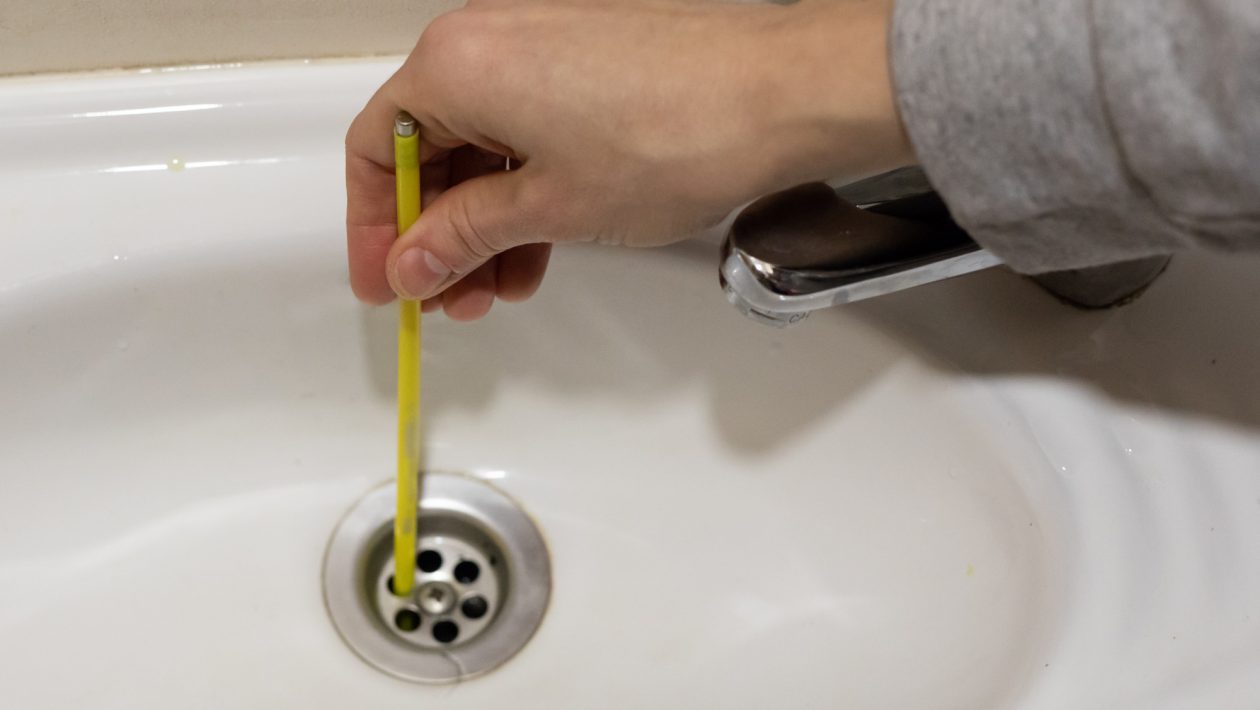


:max_bytes(150000):strip_icc()/freshen-and-unclog-drain-with-baking-soda-1900466-22-bbf940b70afa4d5abef0c54da23b1d3f.jpg)

